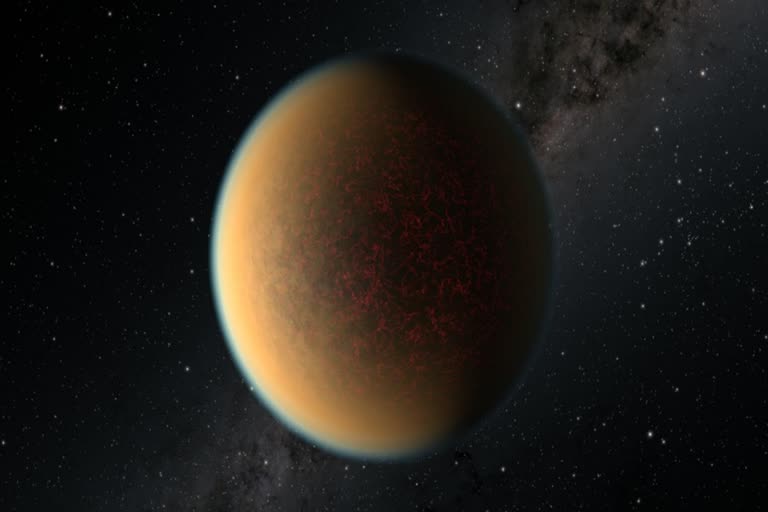Washington: Scientists have found evidence that a planet orbiting a distant star may have lost its atmosphere but gained a second one through volcanic activity.
The planet, GJ 1132 b, is hypothesised to have begun as a gaseous world with a thick hydrogen blanket of atmosphere.
Starting out at several times the diameter of Earth, this so-called "sub-Neptune" is believed to have quickly lost its primordial hydrogen and helium atmosphere due to the intense radiation of the hot, young star it orbits.
In a short period of time, such a planet would be stripped down to a bare core about the size of Earth.
That is when things got interesting.
To the surprise of astronomers, NASA's Hubble Space Telescope observed an atmosphere which, according to their theory, is a "secondary atmosphere" that is present now.
Based on a combination of direct observational evidence and inference through computer modelling, the team reports that the atmosphere consists of molecular hydrogen, hydrogen cyanide, methane and also contains an aerosol haze.
Modelling suggests the aerosol haze is based on photochemically produced hydrocarbons, similar to smog on Earth.
Scientists interpret the current atmospheric hydrogen in GJ 1132 b as hydrogen from the original atmosphere which was absorbed into the planet's molten magma mantle and is now being slowly released through volcanic processes to form a new atmosphere.
The current atmosphere is believed to be continually replenished to balance the hydrogen escaping into space.
"It's super-exciting because we believe the atmosphere that we see now was regenerated, so it could be a secondary atmosphere," said study co-author Raissa Estrela of NASA's Jet Propulsion Laboratory (JPL) in Southern California.
"We first thought that these highly irradiated planets could be pretty boring because we believed that they lost their atmospheres. But we looked at existing observations of this planet with Hubble and said, 'Oh no, there is an atmosphere there.'"
The findings, to be published in an upcoming issue of The Astronomical Journal, could have implications for other exoplanets, planets beyond our solar system.
Also Read: Asteroid 2001 FO32 Will Safely Pass by Earth March 21
(Inputs from IANS)



